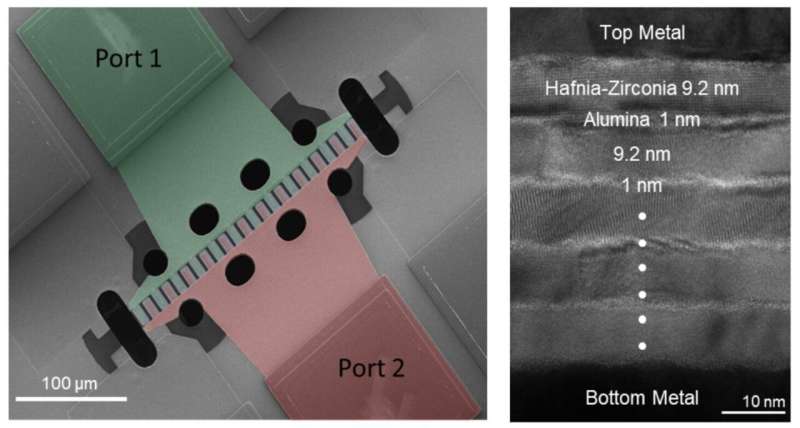Phys.org August 2, 2023
Nanomechanical resonators that can operate in the super high frequency (3–30 GHz) or the extremely high frequency (30–300 GHz) regime could be of use in the development of stable frequency references, wideband spectral processors, and high-resolution resonant sensors. However, such operation requires the dimensions of the mechanical resonators to be reduced to tens of nanometres, and current devices typically rely on transducers, for which miniaturization and chip-scale integration are challenging. Researchers at the University of Florida integrated nanoelectromechanical transducers created using 10-nm-thick ferroelectric hafnium zirconium oxide (Hf0.5Zr0.5O2) films on silicon and aluminium nitride membranes. They could yield resonators with frequencies from 340 kHz to 13 GHz and frequency–quality-factor products of up to 3.97 × 1012. Using electrical and optical probes, they showed that the electromechanical transduction behaviour of the Hf0.5Zr0.5O2 film was based on the electrostrictive effect, and highlighted the role of nonlinear electromechanical scattering in the operation of the resonator… read more.
TECHNICAL ARTICLE 1 , 2

… hafnia-zirconia-alumina nanoelectromechanical resonator operating at 17.4 GHz… Credit: Tharpe et al.